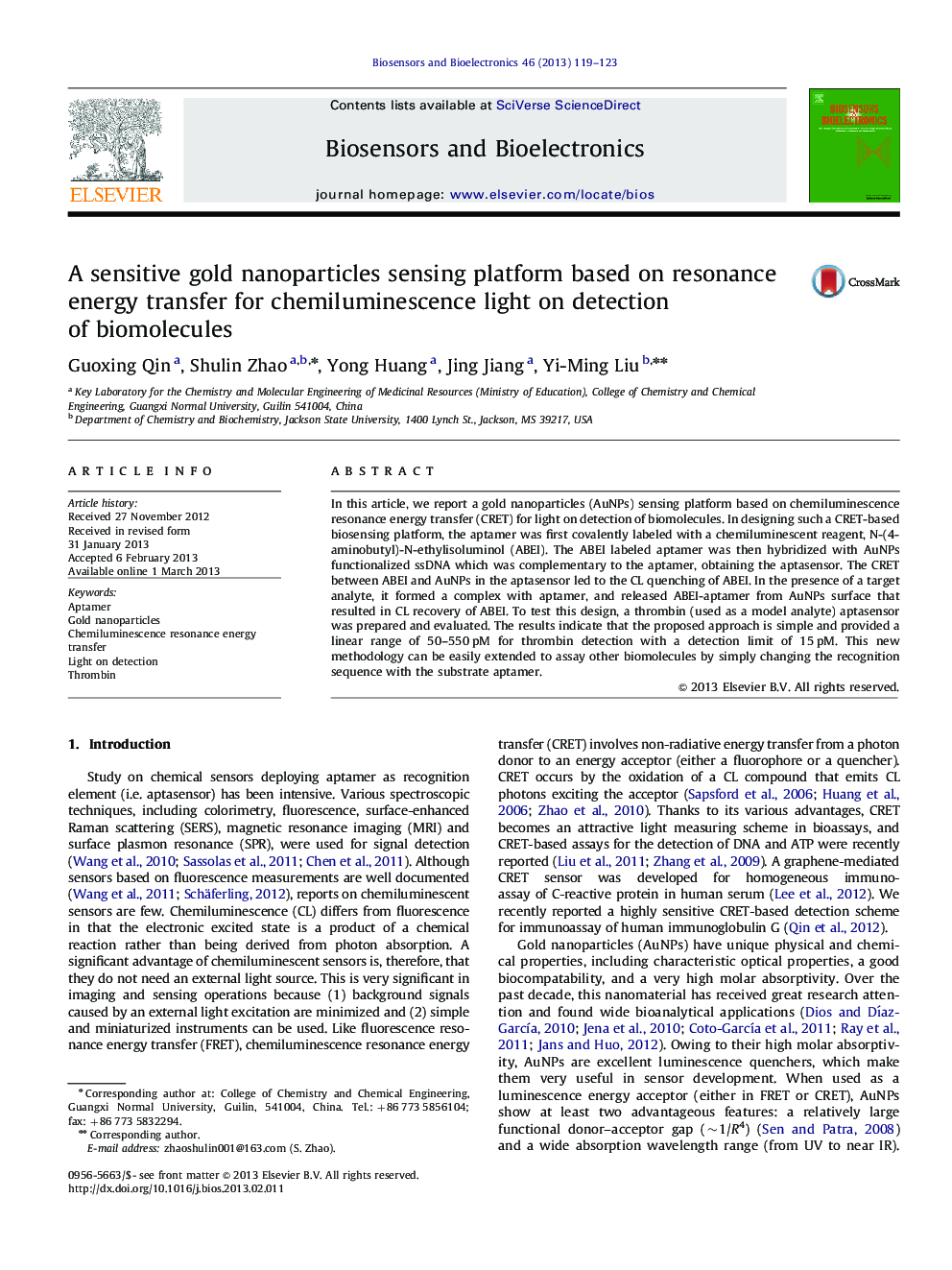| Article ID | Journal | Published Year | Pages | File Type |
|---|---|---|---|---|
| 867182 | Biosensors and Bioelectronics | 2013 | 5 Pages |
In this article, we report a gold nanoparticles (AuNPs) sensing platform based on chemiluminescence resonance energy transfer (CRET) for light on detection of biomolecules. In designing such a CRET-based biosensing platform, the aptamer was first covalently labeled with a chemiluminescent reagent, N-(4-aminobutyl)-N-ethylisoluminol (ABEI). The ABEI labeled aptamer was then hybridized with AuNPs functionalized ssDNA which was complementary to the aptamer, obtaining the aptasensor. The CRET between ABEI and AuNPs in the aptasensor led to the CL quenching of ABEI. In the presence of a target analyte, it formed a complex with aptamer, and released ABEI-aptamer from AuNPs surface that resulted in CL recovery of ABEI. To test this design, a thrombin (used as a model analyte) aptasensor was prepared and evaluated. The results indicate that the proposed approach is simple and provided a linear range of 50–550 pM for thrombin detection with a detection limit of 15 pM. This new methodology can be easily extended to assay other biomolecules by simply changing the recognition sequence with the substrate aptamer.
► A new aptamer chemiluminescence nanosensor was proposed. ► The design principle was based on CRET between ABEI and AuNPs. ► This design provides a new method for the preparation of chemiluminescence sensor. ► The nanosensor exhibited high sensitivity and selectivity for thrombin detection.
